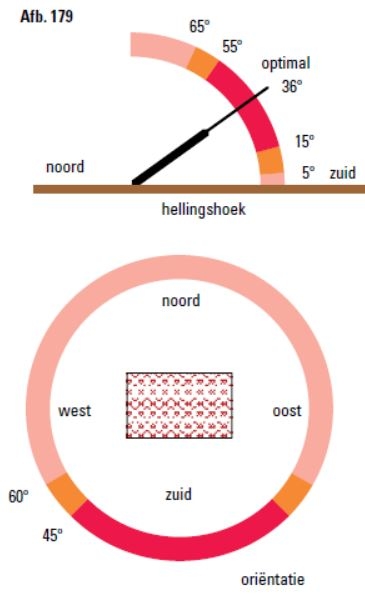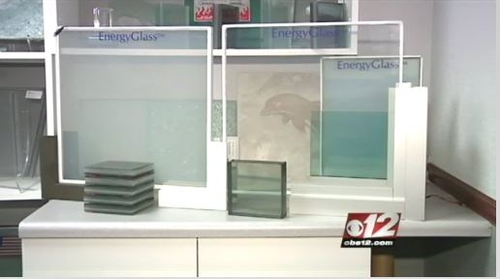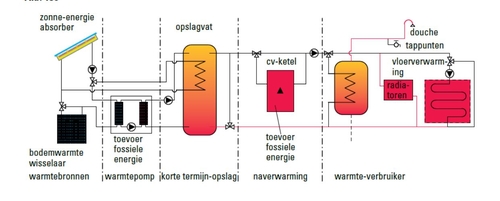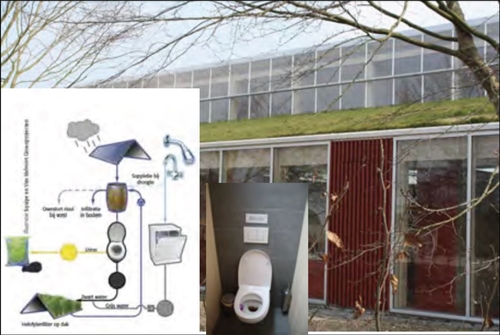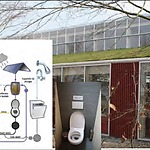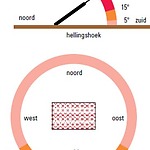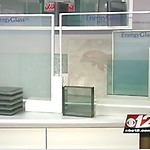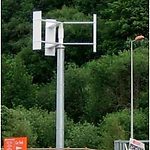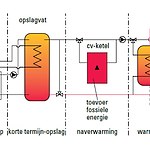What is a decentralized home?
In the dictionary decentralized is defined as: "to reorganise (a government, industry, etc) into smaller more autonomous units". So for a house this means, it's off the grid, no electricity or gas is used offered by companies and no sewer is connected with the house. This sounds rather easy but is hard to fulfil. They house need to be capable of making energy, store extra produced energy and release it in periods of shortage. How can energy be used as efficient as possible? Next to this, how to cook or heat without gas? Last but not least how can we make sure no residues are dumped into the sewer or placed with the "GFT".
How to produce energy?
There are a lot of possibilities mostly used are PV panels, which have an efficiency of 20%. More advanced options are PVT, this is Photovoltaic Thermal panels, which produce energy and heat with a higher efficiency. Norwegian scientist believes that 16m2 PVTput is equal to 21m2 PV + 4m2 TC. How much energy is produced is depending on the location and the angle of placement. Optimal panels are placed in the south direction within a wide of 11 degrees to east or west. The angle toward the sky is also important, because the height of the sun changes from summer to winter, an optimum is reached within an angle of 36 degrees.
When a particular facade is constantly irradiated by the sun, placing a type of energy glass would be affordable. This type of glass exist out of 5 layers of glass within ions and protons are located with convert the radiation into energy.
Other options are also wind turbines or mini turbines, which are more suitable in the built location. Mini turbines have also a lower potential. The golden rule for these products is the larger the blades the higher the production.
Waste could also be a material for producing energy. The main types to convert waste into gas or energy are: incineration, gasification and fermentation. Products which are suitable are GFT, would, plant materials, food waste, excreta etc.
How to store?
While producing energy, not always all energy is used. For example, solar panels produce a lot of energy during the day, but in the evening light, heater, washing machine are switched on, but then no energy is produced. Storing energy in batteries is possible, but with a very low efficiency. Water has the highest energy storing potential, this means, the energy need to be converted into heat or cold, so it can be saved and released in later periods. There are some new technics, where they make use of salinities, so protons and ions will do the trick. One of the first adapter's of this idea is found in the phase changing materials. These materials change by temperature, UV etc. For example, the glasses, which turned black when the sun is shining and are transparent when sitting inside. While the product is changing from liquid to solid energy is produced or saved. When to transfer this idea into a house, it's possible to keep the ventilated air always on 20 degrees, which makes the house more comfortable. The working is based on temperature differences; when the air is warmer, the PCM becomes solid it will extract heat from the air when the air is cooler, the PCM becomes solid and by doing so it expose to heat.
Saving energy en gas
To minimalize the energy and gas consumption of a dwelling a few steps need to take in consideration, first how to adapt the house and second how to adapt the mindset of the family who is living in it.
A zero energy house (no use of energy and gas from the network) would be the end goal. To reach this, there are a few design topics. The first thing to do is start designing with solar gain and shading. It means to optimise solar access and having control over the shading by creating overhangs, fins, louvres, screens and also vegetation could benefit. Next tho this ventilation is extremely important, it provide fresh air and remove heat and moisture. To do this, a window opening in each room and cross ventilation on both sides of the house is needed. Also only use mechanical ventilation when needed, like environments with an of moisture as the kitchen and bathroom. The location of rooms can benefit to reduce energy. For example; placing living areas like the lounge, dining, and bedrooms on the warmest side of the house and placing the kitchen at an eastern corner to take advantage of the morning sun. This directly means, when you need to turn on the light, LED would be preferred because the energy use is extremely low.
Heat losses can be reduced as much as possible, the main focus is in the facade.This is done by reduced thermal bridges and placing a higher insulating layer on the wall. A second insulation layer. The second layer of insulation covers the studs and reduce thermal bridges.
Non-polluting
Food waste, garden waste, faeces, can transform into gas, energy, heat as mentioned in the second paragraph. By doing so, the sewer is less congested, no toxic gases are produced by burning the waste, no extra transport is needed, and it directly provide useful products. So this would be a win-win situation.
